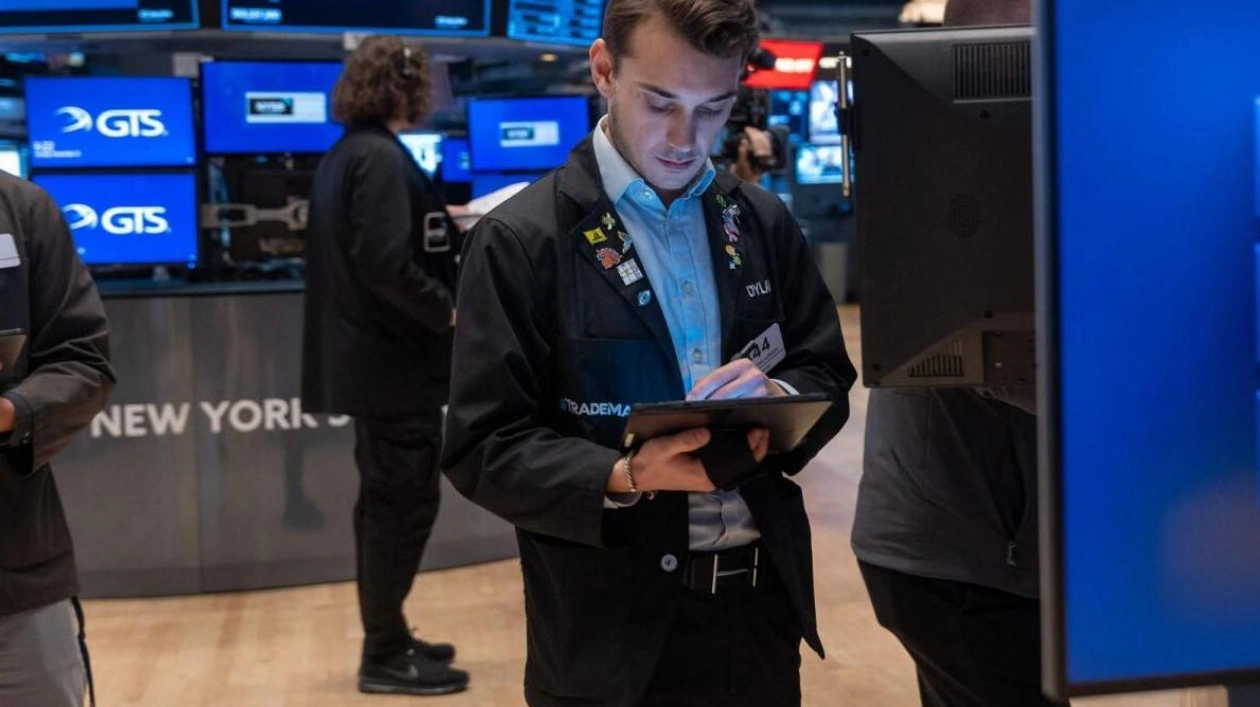Traders at the New York Stock Exchange. The S&P 500 is experiencing one of its best calendar years since 1928. AFP
Even bullish investors now acknowledge that US stocks and credit are overvalued. While many believe the positive macroeconomic outlook will sustain the market momentum into next year, they are cautious that the inevitable downturn will follow soon after. However, not just yet. Last week, Wall Street's three main indices reached new record highs, continuing the strong rally that began over a year ago. Since the Federal Reserve shifted away from raising interest rates in October last year, the Nasdaq has surged over 50%, and Nvidia, the world's largest company, has seen its stock price skyrocket by 250%.
Remarkably, the S&P 500 is enjoying one of its best years since 1928. Meanwhile, the yield spreads of investment-grade and junk corporate debt over Treasuries have narrowed to extremely thin levels. By some measures, they are at their narrowest ever. There is no definitive way to measure market overvaluation, but by any reasonable assessment, these are clear warning signs.
Analysts at Morgan Stanley still advocate buying US equities and credit over international counterparts. However, they note that the 'bull versus bear case skew' for next year is unusually wide due to the significant uncertainty surrounding the incoming Trump administration's fiscal, trade, and immigration policies. Their base case for the S&P 500 is 6,500, representing a 10% increase from Monday's close. But their bull and bear cases suggest a 24% upside potential and 23% downside risk, respectively, indicating a wide range of outcomes.
HSBC analysts also remain 'constructive' on risk assets and foresee further upside potential for Wall Street in 2025, particularly in the first half of the year. However, they warn that US markets are dangerously close to what they term the 'Danger Zone'. They have developed an interest rate swaps model that illustrates what could happen if rates rise above a certain threshold. If this trigger is activated and remains so, a 'reverse Goldilocks' scenario could unfold, putting pressure on riskier assets like stocks, credit, and emerging market debt.
The trigger for the danger zone in the current model is a 10-year Treasury yield of just under 4.5%, which is precisely where we are now. 'If we were to sustainably exceed 4.5%, this would very likely create 'havoc' across all major asset classes,' they wrote on Monday. 'That is by far the biggest risk to our constructive view right now.'
While Wall Street analysts are cautiously optimistic, investors are increasingly becoming outright bulls. According to the latest survey by the American Association of Individual Investors, bullish sentiment, or expectations that stocks will rise over the next six months, is currently at an 'unusually high' 49.8%. Since the AAII sentiment survey began in 1987, bullish sentiment has only surpassed the 50% threshold about 10% of the time.
Asset managers may hesitate to dampen this enthusiasm. Even if they believe a correction is imminent, they need to time it correctly. This timing is often more a matter of luck than any fundamental, technical, historical, mean reversion, or standard deviation analysis. The simple fear of missing out (FOMO) is a powerful force that can keep investor optimism spinning longer than it should.
In investing, being too early often makes you look like a fool rather than a visionary. Therefore, it takes a brave fund manager to advise clients to reduce exposure to an asset or market experiencing a long and significant uptrend. 'As long as the music is playing, you've got to get up and dance,' said former Citi CEO Charles 'Chuck' Prince in July 2007, referring to the leveraged buyout market as signs of stress began to emerge. 'We're still dancing.'
Today, the music is starting to sound a bit off-key, but investors still seem eager to join in.
Source link: https://www.khaleejtimes.com






